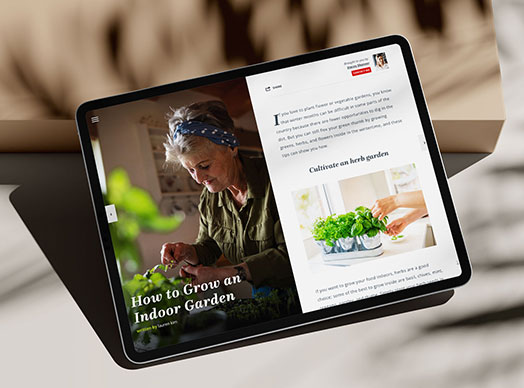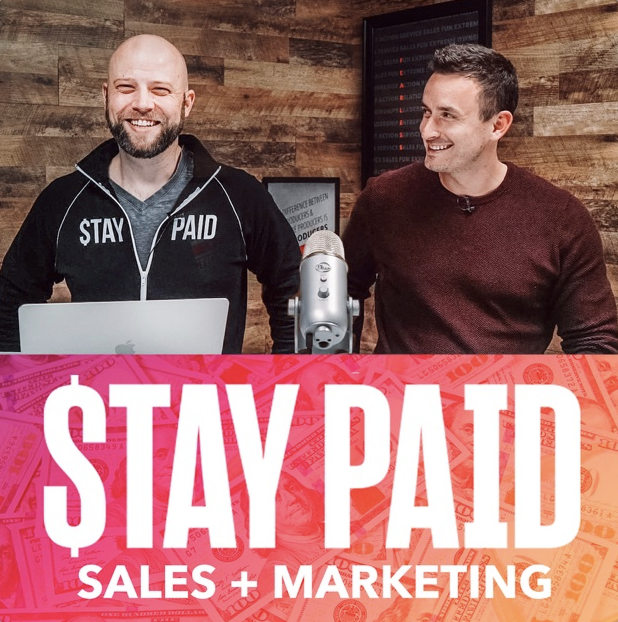Ep 106: Convert More Leads with These Email Marketing Tips (with Jill Fanslau)
Jill Fanslau is the Content Marketing Manager for AWeber, one of the world’s leading email marketing and automation platforms. Her previous experience in print and digital journalism has given her a unique perspective on marketing in the digital age.
Today on Stay Paid, Jill explains how you can use email marketing and relevant content to convert more leads and earn more business.
Key Points
- There are certain emails you should send to everyone on your list.
- You’ll get better results with a single, unambiguous call-to-action.
- It’s important to remove unengaged recipients from your list.
Q: Introduce yourself to our audience.
I graduated college with a print journalism degree right as newspapers were beginning to decline. I quickly saw the writing on the wall and pivoted.
I got a job at National Geographic Society and was working for one of their publications. Then, I started going to grad school for digital journalism. I started blogging and exploring social media. I went over to Men’s Health, where I became Fitness Director, and then director of the website.
In this position, you had to create great content but also be able to sell products to your users. Data was driving everything we were doing. We were creating content for the website, email, YouTube, and social media. It was so great to have all this data at your fingertips.
When I was getting my degree in print journalism, you didn’t have to worry about the data—you just had to create great stories. But that was also kind of the downfall of journalism.
From Men’s Health, I jumped over to the B2B SaaS (software as a service) industry. AWeber’s founder actually created the first autoresponder in 1998. Since then, his goal has been to create tools that are powerful but simple enough for anyone to use.
Q: What are some of the basic principles that drive success for email marketing?
You might have a list, but how active and how engaged is that list? If only 1,000–2,000 people are engaging out of a list of 10,000 emails, get those other people off your list.
This can be really hard, because you put so much work into growing an email list. But, at the end of the day, you want people who are going to read and interact with your content. The people who don’t are only going to hurt your deliverability.
If you’re starting to realize that your list isn’t engaged, you need to start thinking about how you’re promoting your list (and where). You might need to focus your efforts elsewhere.
Q: What are the things you’re seeing that are driving success?
You’re trying to build an engaged list, but it always comes back to great content.
You should never send an email that you don’t feel good about. Avoid R.O.T. in your emails.
Redundant
Oudated
Trivial information
You have one opportunity to mess this up with the people reading your emails. If they don’t like this email, you’ve lost them.
Think about what sets you apart. That’s what will keep people coming back. Once people see you’re not invested, they’re no longer invested in you.
I think you also need to think about the tone and voice you’re using. Create a cohesive experience. You don’t want people to feel a bait-and-switch when they go from one platform to another.
We looked at 100 email influencers. Here are some things we found:
- Average 400 words per email
- Average length of 3 minutes to read
- 6 percent of subject lines used emojis
- 60 percent of subject lines used sentence case
- 6 percent of subject lines used all lower case
There are multiple ways of using this information. You could look at what these influencers do and imitate it, or you could flip it and do the opposite. If you have a 10-character subject line, you’ll immediately stand out in the inbox among the 60-character subject lines.
It all depends on your audience. You need to do a lot of testing and see what they love and what they hate. If something works for your audience, then it works for them. What works for other businesses might not work for yours.
Q: Which types of content seem to be the most effective?
Everyone should have a welcome email. When someone signs up for your list, you should have a welcome email go out automatically. It should be in your tone or voice and should tell them what they can expect to see in your emails.
In that email, you can send them a curated list of articles you like, a list of pages you visit regularly, an original blog, or a coupon code. Give them value. Take advantage of the fact that welcome emails have an open rate of about 80 percent.
You can use email like you’re using a megaphone—where you’re speaking loudly and not listening—or you can use it to create a conversation.
Sprinkle in value whenever you can. When you do this, people are much more likely to buy from you.
Personalization is also important, even with an automated email. You can have two different automated campaigns that are personalized to two different tracks of people, and then send different content to those tracks. This approach speaks much more to their pain points and what they came to you for in the first place.
Another email you should send at least once a quarter is a question email. Ask your audience what they want from you. Ask whether there’s something you’re missing, or what their goals are for the upcoming year. You’d be amazed at how much content we’ve created just by asking questions. You could get your next ten email ideas just from one question email.
Q: What should small businesses know about calls-to-action?
Keep one call-to-action per email. Don’t send them down three different paths—get them to do the one action you want them to take.
At AWeber, we saw that we had single emails with 20 different calls-to-action. People would completely forget the one thing we wanted them to do.
What we’re doing right now is focusing on creating habit loops. We want someone to read an email, go and take action, and then they’ll get another email. Depending on how often they do that, they’ll be more or less likely to become a paying customer.
When someone won’t take an action, I’ll start to educate them more on why it’s important to email their audience. Those are the people who need a little bit more of a nudge. They haven’t quite bought in yet. I wouldn’t necessarily throw a whole guide at them—it might just be a few tips in an email.
At the end of the day, I want them to take that one action. “What’s the end result that I want them to do? How do I get them to buy what I’m putting down?”
If people aren’t answering emails, I might try to get them on the phone. I’ll ask what I can help them with. If they’re not interested, then at least we know that now. But a lot of times they just need help taking that first step.
It’s important to qualify your leads. You don’t want to inundate them, but you also don’t want to hold them back from making a purchase.
Q: Do you have any writing tips for businesspeople who aren’t necessarily writers?
One of the biggest comments we get is that people just don’t know what to write in emails. You should automate welcome emails, as well as an email about your backstory.
There’s a value email, giving people some extra unexpected stuff for free. There’s also an agitation email, reminding people of their pain point and then providing them with a solution for it. Then, you send them a case study/proof email—for example, someone who listed with you and then sold their home quickly.
We have templates our customers can use for these different types of email. A lot of people like to write, but then a lot of other people don’t. We give them an option.
Q: What do you think the future of email is?
I think we’re at this pivotal moment with email, where so much is going to be changing over the next few years. We’ll have dynamic content, where you’ll open an email one time and it’ll change the next time you open it.
An email will say, “Congratulations! You added 55 new subscribers.” The next time, it will say, “Congratulations! You added 62 new subscribers.” The AMP email format will allow you to take interactive polls and surveys in emails.
There is just so much that we are doing now that will change the way we do things. Right now, AWeber offers some of these dynamic options, but you have to be fairly tech-savvy to use them. Our team is working around the clock to create more of a drag-and-drop technology.
For example, real estate agents who have several listings would be able to create a carousel that will update, and then people can click to go to a website to view them.
Q: What advice would you give to your younger self?
First, don’t use Sun-In—it turns your hair orange.
Second, your career path doesn’t have to be a ladder. I think I am a great example of that. When you’re always concentrating on the next level up, you’re overlooking other opportunities that could be looking you right in the face. It’s tough, but it’s also super exciting.
Action Items:
- Send an email asking your audience what you can do to help them.
Connect with Jill:















 Soundcloud
Soundcloud iHeart Radio
iHeart Radio Spotify
Spotify Spotify
Spotify


